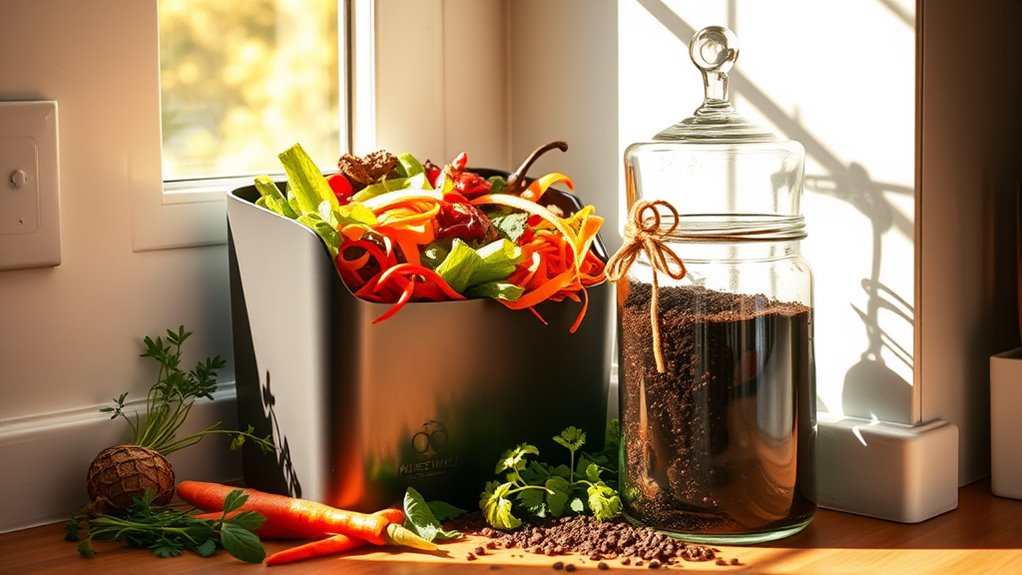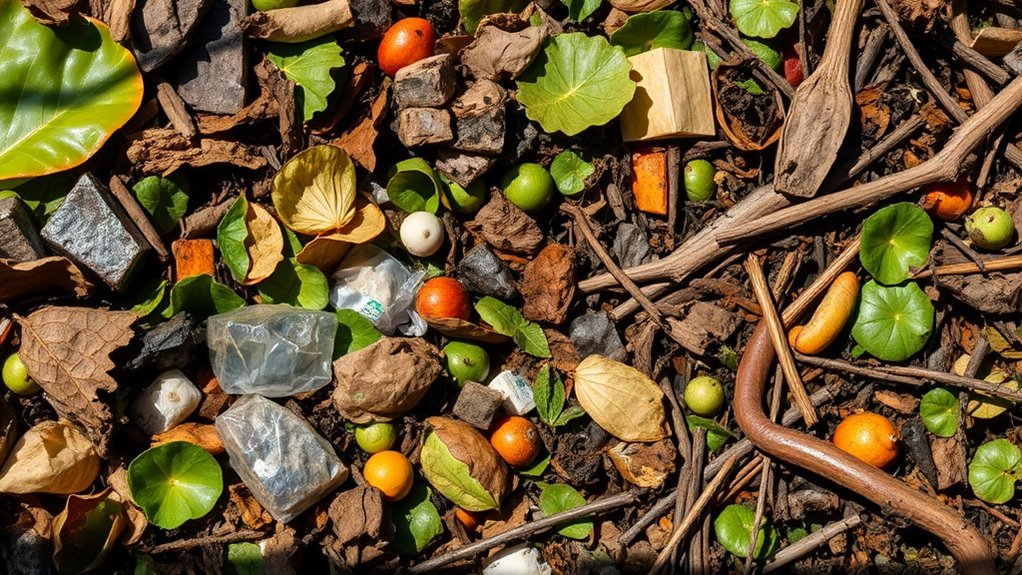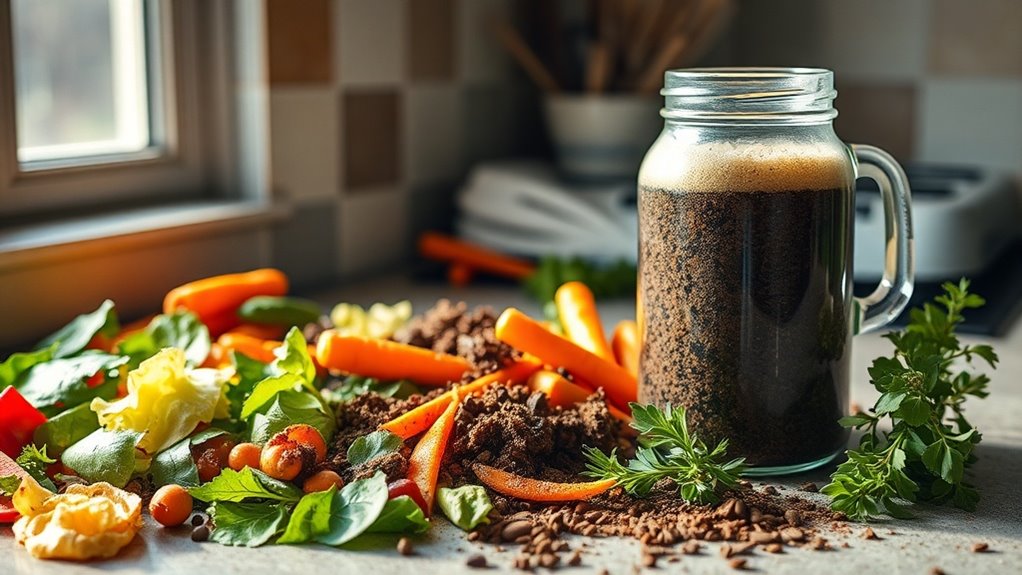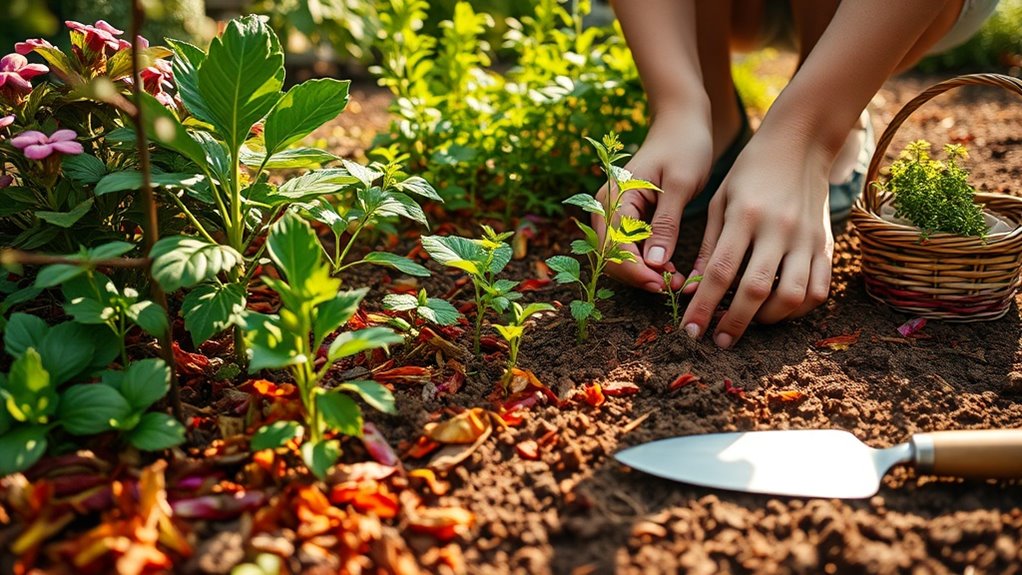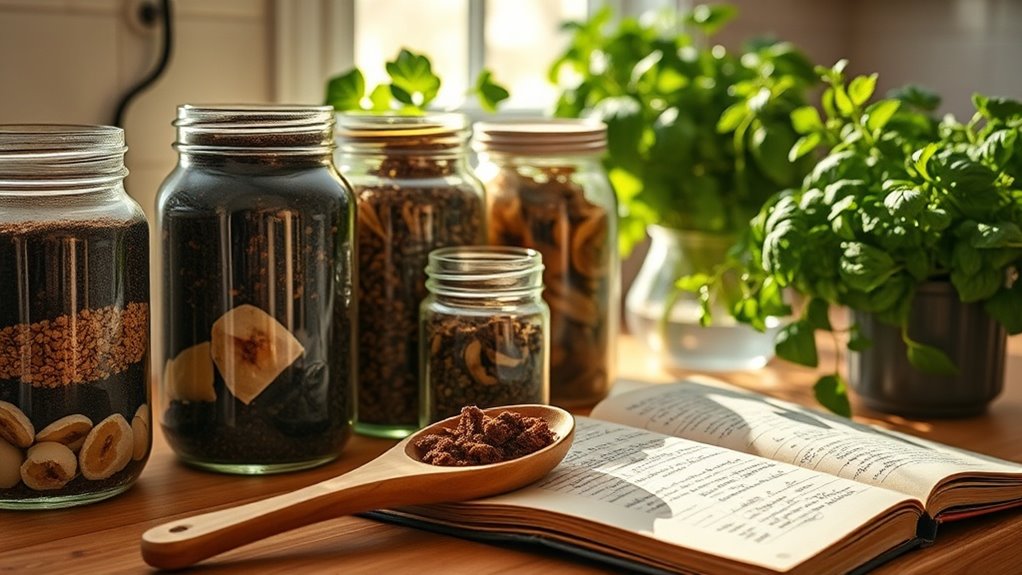Turn Kitchen Scraps Into Rich Compost in Just 2 Weeks
Turning kitchen scraps into rich compost in just two weeks is easier than you might think. By balancing your green materials with browns, you can create a nutrient-dense soil amendment that boosts your garden’s vitality. It’s all about the right ingredients and a few simple steps. Curious about how to get started and make the most of your scraps? Let’s explore the process together.
Key Takeaways
- Chop kitchen scraps into smaller pieces to increase surface area and speed up decomposition.
- Balance nitrogen-rich green materials with carbon-rich brown materials for optimal composting.
- Turn the compost pile every few days to aerate and promote microbial activity.
- Maintain moisture by adding water as needed, ensuring the pile is damp but not soggy.
- Include a variety of materials, like dried leaves and shredded paper, to enhance decomposition rates.
Understanding Composting Basics
Understanding composting basics is key to achieving fast composting.
First, the scraps break down through a natural process involving microorganisms, heat, and moisture.
You’ll want to balance green materials, like fruit peels, with brown materials, such as dried leaves, to create the ideal environment for these organisms.
Turning your compost regularly introduces oxygen, speeding up decomposition.
The result? Rich, nutrient-dense compost that enriches your garden soil.
With a little attention, you can transform those scraps into valuable resources for your plants in no time! Additionally, efficient composting techniques can further enhance the speed of the decomposition process.
Ideal Kitchen Scraps for Composting
When it comes to composting, not all kitchen scraps are created equal. Focus on fruit and vegetable peels, coffee grounds, eggshells, and leftover grains.
These scraps provide essential nutrients and help balance carbon and nitrogen in your compost. Avoid adding meat, dairy, and oily foods, as they can attract pests and create odors. Shredded paper towels and cardboard can also enhance your compost by adding carbon.
In addition to these items, consider adding common household items like dried leaves or grass clippings to further improve your compost. Remember, the key is variety; mixing different materials speeds up the decomposition process.
The Composting Process: Step-by-Step
Starting the composting process is as simple as layering your kitchen scraps and organic materials. Begin with a base of coarse materials like twigs, then alternate between green (nitrogen-rich) and brown (carbon-rich) scraps.
| Layer Type | Examples |
|---|---|
| Green | Fruit peels, coffee grounds |
| Brown | Dry leaves, cardboard |
| Coarse | Twigs, straw |
| Moisture | Water (as needed) |
| Aeration | Turn every few days |
Keep the pile moist but not soggy, and let nature work its magic. Additionally, incorporating odor-free composting techniques can help maintain a pleasant environment while you create nutrient-rich compost. In just two weeks, you’ll have rich compost!
Tips for Speeding Up Composting
Here are three practical tips to help you create rich compost in no time:
- Chop Your Scraps: Cut your kitchen scraps into smaller pieces.
This increases surface area, helping microbes break them down faster.
-
Balance Green and Brown Materials: Keep a good mix of nitrogen-rich greens (like fruit scraps) and carbon-rich browns (like dried leaves) to maintain an efficient composting environment.
-
Turn the Pile Regularly: Aerate your compost by turning it every few days.
This boosts oxygen flow, speeding up decomposition and reducing odors. Additionally, maintaining an efficient composting environment can enhance the activity of beneficial microbes, further accelerating the process.
Happy composting!
Using Your Compost in the Garden
How can you transform your compost into a valuable resource for your garden?
Start by sifting through your finished compost to remove any large pieces.
Once it’s ready, mix it into your garden beds or use it as a top dressing for your plants.
This nutrient-rich material improves soil structure, encourages beneficial microbes, and retains moisture.
You can also create compost tea by steeping compost in water, providing a liquid fertilizer for your plants. This method of compost tea is an excellent way to maximize the nutrients your plants receive.
Apply it every few weeks during the growing season to boost vitality.
With your homemade compost, you’ll nurture a thriving, sustainable garden that flourishes naturally.

